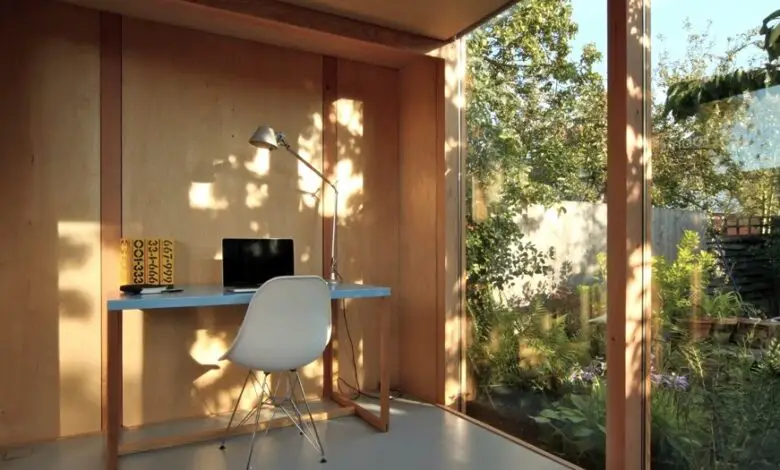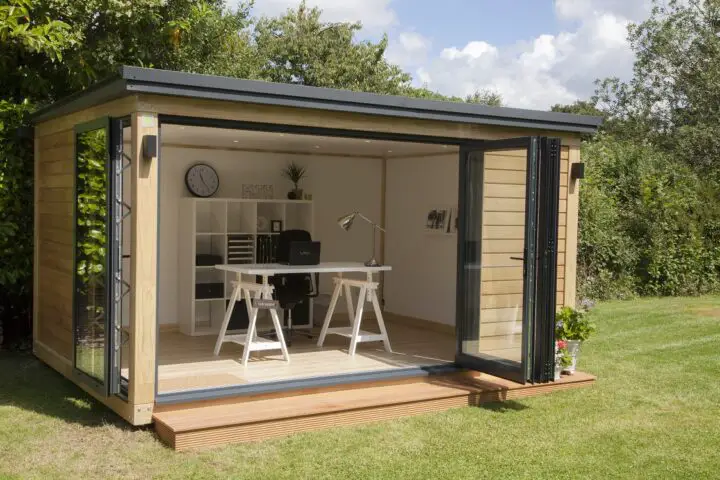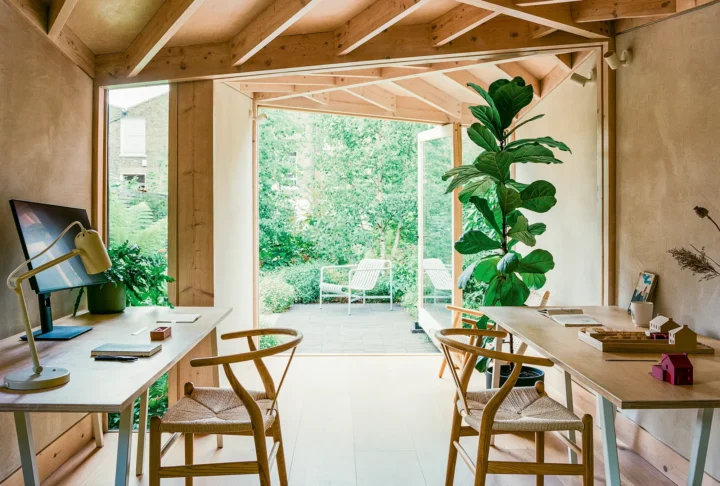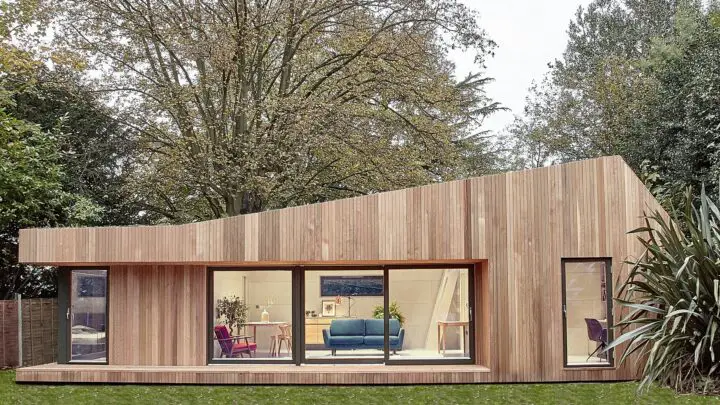How to Build a Garden Office: Turning Your Outdoor Space into a Workspace

Gardening and office work may seem worlds apart, but in our current reality where remote work is becoming the norm, the idea of crafting a garden office has never been more appealing. A garden office stands as a versatile, innovative space that allows professionals to relish the beauty and tranquility of their backyards while diving deep into their work endeavors. In this extensive and detailed guide, we shall explore each step and aspect crucial to building your very own garden office, making the process seamless and enjoyable.
Planning Your Garden Office Space

In constructing a garden office, meticulous planning plays a pivotal role. It’s essential to consider the purpose and functionality of the space beforehand. Envision the kind of work you’ll be undertaking, the equipment you’ll need, and the storage solutions that will best suit your professional endeavors. It’s also vital to think about the aesthetic and vibe you want to create. Do you desire a modern, sleek look, or do you prefer a cozy, rustic ambiance? Understanding these elements will help in determining the design, size, and layout of your garden office. Additionally, list down the amenities and facilities you want, such as a kitchenette or a restroom, and plan the space accordingly. Initial planning should also involve budget consideration. Outline a clear, realistic budget, accounting for all possible expenses, from construction materials to interior furnishings, to avoid financial strain as the project progresses.
Choosing the Right Location
Selecting an optimal location for your garden office is paramount. The location will significantly impact the office’s functionality, accessibility, and overall ambiance. It’s crucial to consider factors such as sunlight exposure, proximity to the main house, and the natural landscape of your garden. Prioritize areas that receive ample natural light, promoting a lively and energized work environment while reducing dependence on artificial lighting. However, also consider the path of the sun to avoid glare during peak hours. Evaluate the distance from the main house; it should be close enough for convenience yet far enough to maintain a sense of separation. The topography of your garden also plays a significant role. Choose a level area to avoid extensive groundwork and consider the surrounding flora; positioning your office near mature trees can offer natural shade and a more harmonious integration with the environment.
Designing Your Garden Office

Once the location is finalized, delve into the design aspect. The design of your garden office should amalgamate functionality with aesthetics, creating a space that’s conducive to work while being aesthetically pleasing. Consider the layout meticulously; it should facilitate smooth movement and accommodate all necessary equipment and furniture without feeling cramped. Integrate ample storage solutions to keep the space organized and clutter-free. Opt for a design that complements the existing architecture and landscape, ensuring a cohesive and harmonious look. Incorporate large windows and skylights to usher in natural light and offer picturesque views of the garden, enhancing the work experience.
Selecting Suitable Materials
When it comes to selecting materials, prioritize durability, sustainability, and aesthetics. Opt for materials that are resilient to weather conditions, ensuring longevity and minimal maintenance. Consider using eco-friendly materials like recycled steel, reclaimed wood, and sustainable insulation materials to reduce environmental impact. The material choice should also align with the desired aesthetic; for instance, cedarwood can offer a natural, rustic look, while aluminum cladding can lend a modern, sleek appearance. Research various flooring options; tiles, laminates, and hardwood are popular choices, each offering distinct advantages. For the roof, consider materials like EPDM rubber or metal roofing, renowned for their durability and weather resistance.
Permits and Regulations
Before embarking on the construction journey, familiarize yourself with the local zoning laws, building codes, and permit requirements. Consult your local planning department to ascertain the regulations governing garden office constructions in your area. Some regions may have restrictions regarding size, height, and proximity to property boundaries, and navigating these regulations is essential to avoid legal complications. Obtain the necessary permits and ensure your design complies with the local building codes, focusing on safety and structural integrity. It’s also prudent to discuss your plans with your neighbors to address any concerns and maintain harmonious relations.
Foundation and Base Construction
The foundation is the bedrock of your garden office, providing stability and durability. Assess the soil conditions and choose a foundation type that’s suitable for your garden’s terrain, whether it be a concrete slab, pile foundation, or a wooden base. Employ professionals to conduct soil tests and recommend the optimal foundation type, ensuring the structure is secure and long-lasting. The base should be level and stable, capable of bearing the load of the structure and preventing any moisture ingress. Invest in high-quality materials and professional installation for the foundation, as any compromise on quality can lead to structural issues in the long run.
Building the Garden Office Structure

Constructing the main structure involves erecting the walls, roof, and integrating the doors and windows. Opt for a robust framing material like treated timber or steel, ensuring the structure is resilient and durable. Employ experienced builders to assemble the structure, focusing on precision and adherence to design specifications. The roofing should be installed meticulously, with attention to waterproofing and insulation to prevent any leaks and thermal issues. The integration of doors and windows should be seamless, ensuring security and functionality. If you’re having any issues with the project you need professional help in the form of https://www.sdphgardenrooms.com.
Windows, Doors, and Ventilation
For windows and doors, focus on quality, security, and aesthetic appeal. Choose double-glazed windows for enhanced insulation and energy efficiency. Select doors that are sturdy, secure, and complement the overall design of the garden office. Consider incorporating sliding or bi-fold doors to save space and create a seamless connection with the garden. Proper ventilation is crucial to maintain air quality and prevent condensation; integrate vents and consider adding a ceiling fan or an air purifier to optimize air circulation.
Electrical and Networking Considerations
In today’s digital age, a garden office needs to be well-equipped with electrical and networking facilities. Plan the electrical layout meticulously, ensuring ample sockets for all your gadgets and appliances. Employ a certified electrician to install the wiring, sockets, and lighting fixtures, adhering to safety standards. Invest in a robust networking solution; consider extending your home’s Wi-Fi network or installing a dedicated connection to ensure seamless connectivity. Incorporate cable management solutions to keep the space neat and organized.
Insulation and Climate Control
Effective insulation is vital for maintaining a comfortable working environment throughout the year. Invest in high-quality insulation materials like fiberglass or foam boards to optimize thermal performance. Pay attention to insulating the walls, roof, and floor to prevent heat loss and ensure energy efficiency. For climate control, consider installing a heating, ventilation, and air conditioning (HVAC) system or portable heaters and air conditioners, depending on your needs and budget.
Furnishing Your Garden Office

The final step is furnishing your garden office. Choose ergonomic furniture that supports your posture and enhances comfort, such as adjustable chairs and spacious desks. Incorporate storage solutions like shelves and cabinets to organize your documents and supplies efficiently. Personalize the space with décor that reflects your style and inspires creativity, be it artwork, plants, or decorative lighting. Pay attention to the lighting; integrate a mix of natural, ambient, task, and accent lighting to create a well-lit, inviting workspace.

